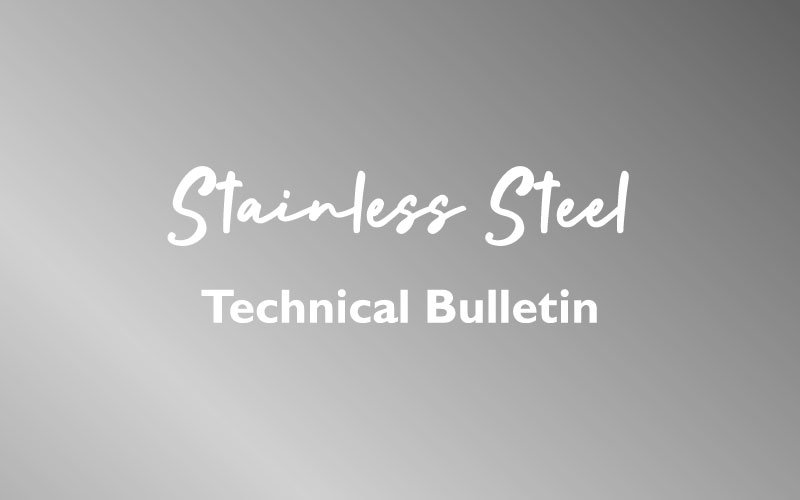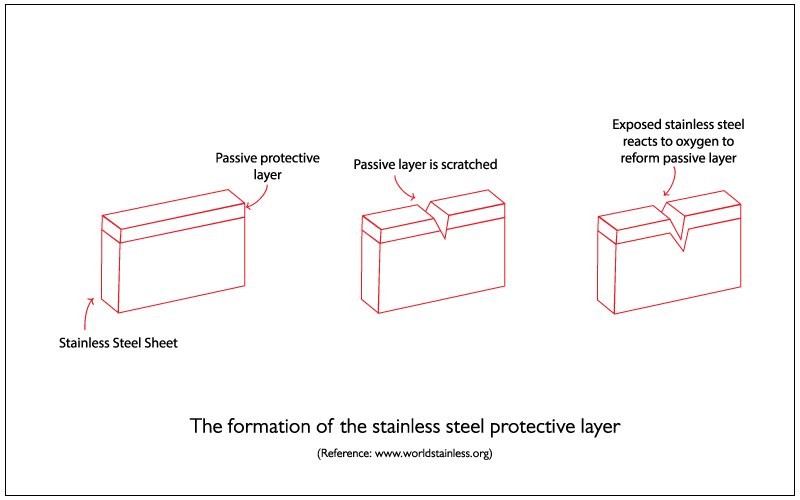

A self healing metal
Stainless Steel – a self healing metal, is highly resistant to corrosion. It is the high proportion of chromium in stainless steel (over 10.5%) that gives stainless steel this super power. The chromium reacts with oxygen to form a passive oxide layer over the stainless steel. If the protective layer is broken (by scratching for example) it will reform.
This strong resistance to corrosion is one of the key reasons stainless steel is so highly valued, particularly in situations where environmental co
nditions are extreme, such as coastal or highly polluted industrial areas.
Other attractive reasons to use stainless steel include it’s light weight, the lack of maintenance required, and its long product life span.
Despite it’s superior self healing properties, stainless steel is not immune to corrosion, particularly when it is situated in tough conditions. Under certain circumstances, the protective layer can be permanently damaged and it’s usually caused by:
- chemicals
- temperature
- pH
- the finish of the surface
- the way the material is fabricated
- any maintenance undertaken on the surface
Stainless Steel classifications
Stainless steel can be classified into five different categories – austenitic, ferritic, martensitic, duplex and precipitation hardened.
For our purposes, the majority of stainless steels we use fall into the austenitic category, so this technical bulletin will focus on this category, but we have included a brief summary of each type.
| CATEGORY | PROPERTIES |
|---|---|
| Austenitic stainless steel
This covers grades of stainless steel in the 200 and 300 series. The most commonly used stainless steel grades are 304 and 316. Both are austenitic stainless steel. |
|
| Ferritic stainless steel |
|
| Martensitic stainless steel
This covers grades of stainless steel in the 400 series |
|
| Duplex |
|
| Precipitation hardened stainless steel |
|
STAINLESS STEEL GRADES
There are many grades of stainless steel but the majority of products are made out of 304, 316 or 316L.
| GRADE | DESCRIPTION |
|---|---|
| 304 |
|
| 304L |
|
| 316 (Marine Alloy) |
|
| 316L |
|
STAINLESS STEEL FINISHES
| FINISH | DESCRIPTION |
|---|---|
| No 2D |
|
| No 2B |
|
| Bright Annealed (BA) |
|
| No 4 |
|
| No 8 |
|



